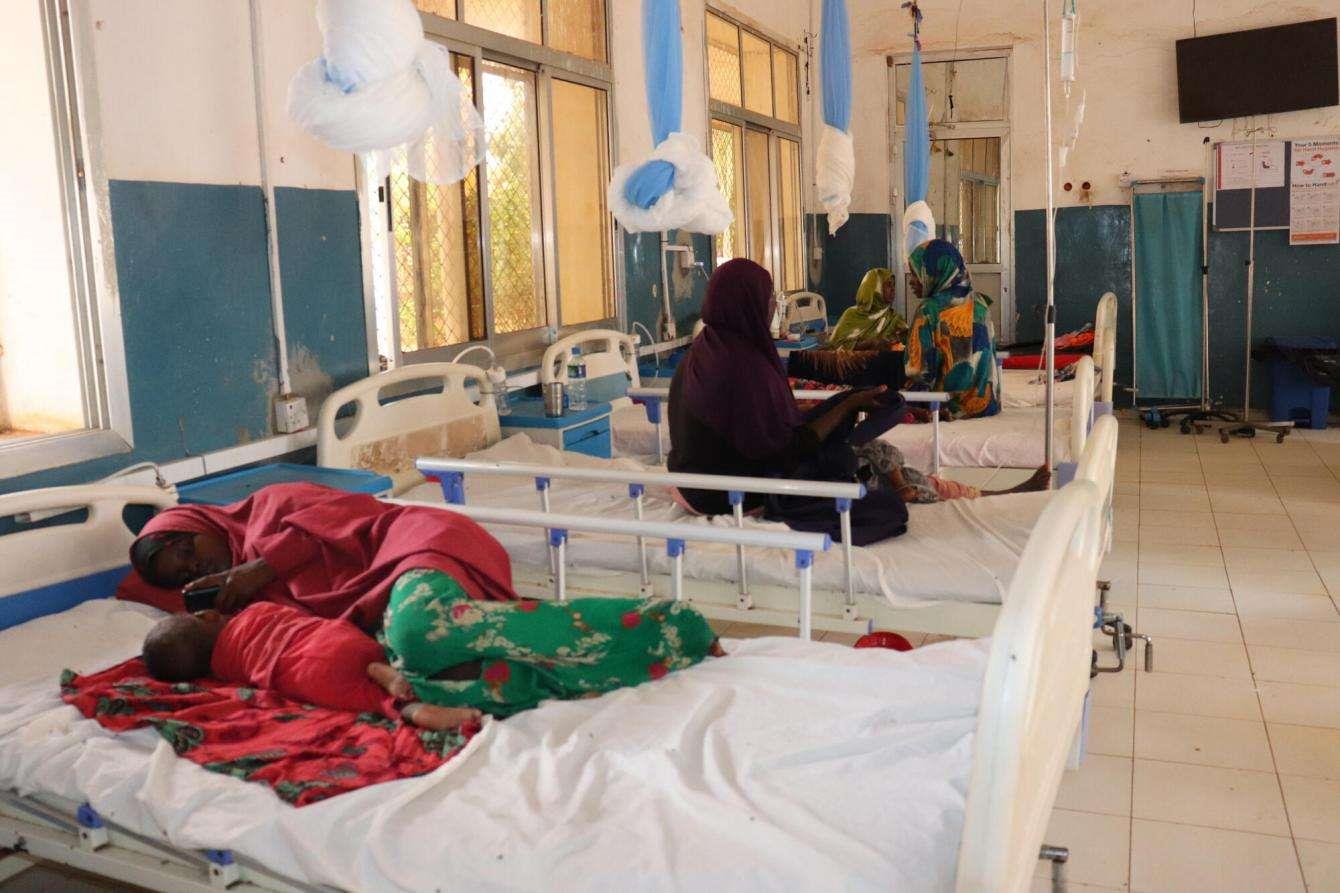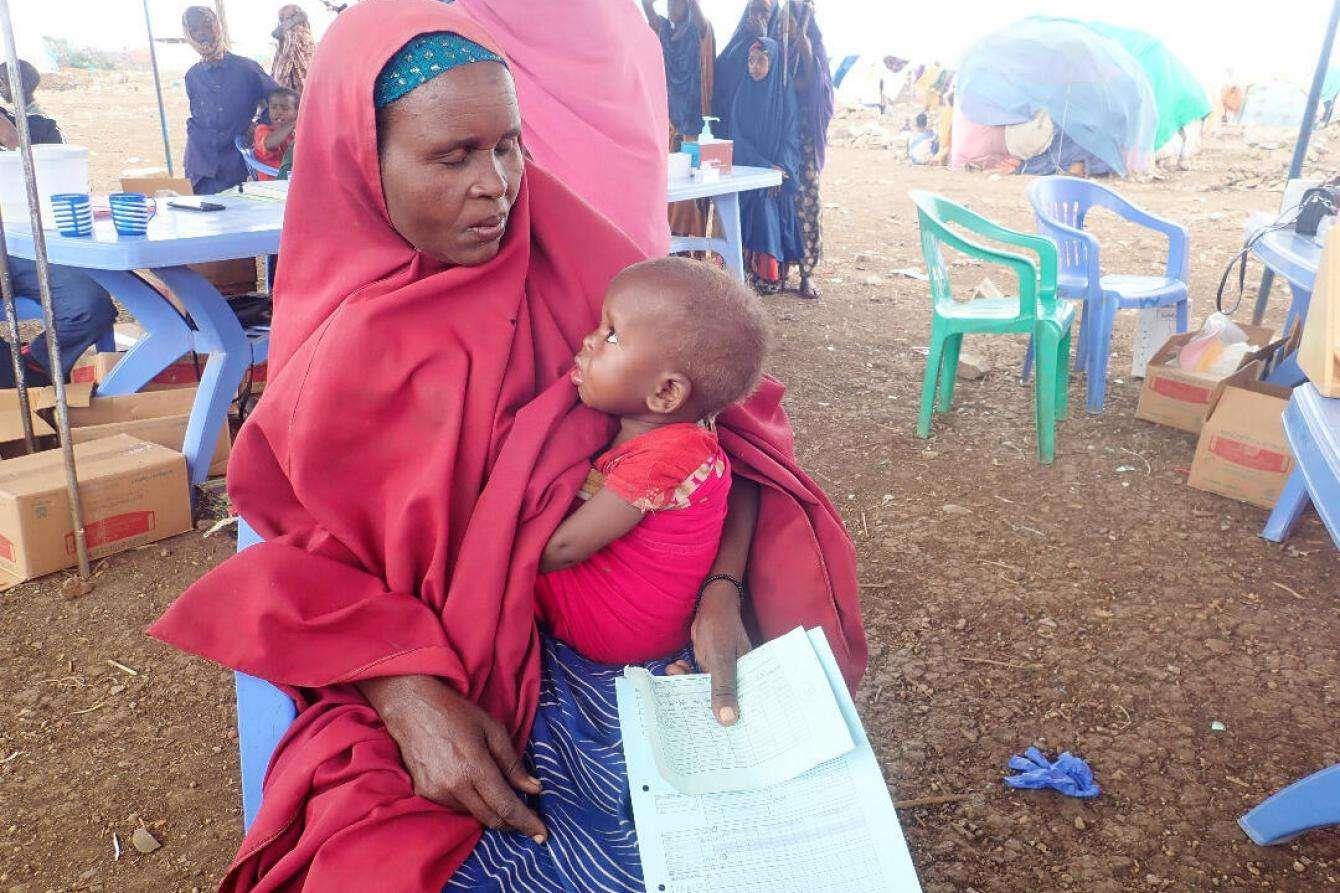(MENAFN- SomTribune) Displacement, drought, malnutrition, and disease outbreaks are fueling a humanitarian emergency in Baidoa is still in the grips of an unrelenting drought—the worst in 40 years—and is approaching a fifth consecutive rainy season that is forecasted to fail. In response, Doctors Without Borders/Médecins Sans Frontières (MSF) medical teams are working diligently to care for growing numbers of acutely children in Baidoa city in South West state.
Somalia is of floods, drought, decades-long conflict, disease outbreaks, and inadequate humanitarian response that has taken a heavy toll on people who barely have time to recover from one crisis before another hits. Many lost their livelihoods when their crops failed and livestock died, making it harder for families to purchase food. There are few options for people to provide for themselves or their families in their communities. Many describe a state of desperation—not knowing where they will get what they need to survive and relying solely on humanitarian assistance that can be unreliable.
MSF teams are treating approximately 500 malnourished children each week in the region. The cases we're seeing have also been exacerbated by deadly infectious diseases such as . Rates of the disease are increasing dramatically as people find refuge in overcrowded living conditions. In hundreds of informal makeshift shelters and sites all over the city, poor water and sanitation services are also contributing to the spread of waterborne diseases such as . These outbreaks are spurring a vicious cycle, increasing the risk of malnutrition.
Here are five facts about displacement, drought, malnutrition, and disease outbreaks in Baidoa.

Measles patients receive treatment in an isolation ward in Bay Regional Hospital in Baidoa. Somalia 2022 © Dahir Abdullahi/MSF 1. Baidoa hosts the second-largest displaced population in Somalia
Between January and August, more than 200,000 people arrived in Baidoa. This is in addition to the approximately 600,000 people already living in the city. After the capital, Mogadishu, Baidoa now hosts the second-largest number of displaced people in Somalia.
MSF is working in this city to provide emergency nutrition, measles, and cholera services to an estimated 20 percent of the city's population. Diseases can often spread more rapidly among displaced people given close living conditions in camps.
2. MSF treats 500 acutely malnourished children per week
Between January and August of this year, MSF screened more than 206,000 children across Somalia for malnutrition, finding that 23,000 of them are malnourished. Some of these children are arriving at MSF's nutrition programs in an already critical state.
In Baidoa, where MSF runs 20 mobile nutrition clinics and has 32 nutrition monitoring sites, medical teams treated more than 12,000 malnourished children in the first eight months of this year. In August—just in one week—teams screened 955 children and admitted 761 to the nutrition program, most of them from newly displaced families. MSF teams continue to treat approximately 500 acutely malnourished children per week.
3. Drought and malnutrition intensify an already dire health situation
Multi-seasonal drought has worsened the nutrition situation for people, but the protracted humanitarian crisis is continually driven by multiple factors. These include Baidoa's health care system struggling to provide for the additional hundreds of thousands of displaced people. Long-standing conflict, inadequate humanitarian response, , and rising food and fuel prices also contribute to difficult situations for people.

Aisha Adan arrived at Gooyale camp for internally displaced people in Baidoa after fleeing her rural village due to a drought that swept away her livestock and crops. Aisha brought her daughter, Ruweyda Mohamed, to Elbet nutrition mobile clinic, where she was found to be severely malnourished. Somalia 2022 © Marian Isak/MSF 4. There's a vicious cycle of malnutrition and deadly diseases
Malnutrition is exacerbated by infectious diseases like measles and cholera; a malnourished person is more susceptible to infection, and infection contributes to malnutrition.
Measles is endemic in Somalia, but in just the first six months of 2022, the country has reported double the number of measles cases for the whole of 2021. Between January and August 2022, MSF has admitted more than 5,460 children with measles in all of its facilities in Somalia. In Baidoa, there is a new wave of measles. Approximately 30 percent of children MSF teams treat are older than age five and most are from newly arrived families.
In April, a cholera outbreak started in Baidoa. Between May and August, MSF recorded 14,112 cholera patients at 15 oral rehydration points, and 989 were admitted to its cholera treatment center.
In order to prevent the disease's spread where displaced people have settled, MSF carried out water trucking, chlorination, and borehole drilling to increase access to clean water. Teams also built 344 latrines, conducted health education activities, and distributed essential items like soap and water jerrycans to 3,700 households.
5. A swift, sustained, and broad response can save more lives
Working in Somalia, conflict and insecurity remains an issue. Many places are difficult to access where people may be severely affected by the drought and where disease outbreaks and malnutrition are extremely likely.
It is crucial to meet medical needs as part of the humanitarian response to this crisis and include integrated nutrition programs, measles vaccinations, , and community water and sanitation measures.
Doctors Without Borders